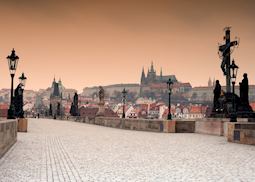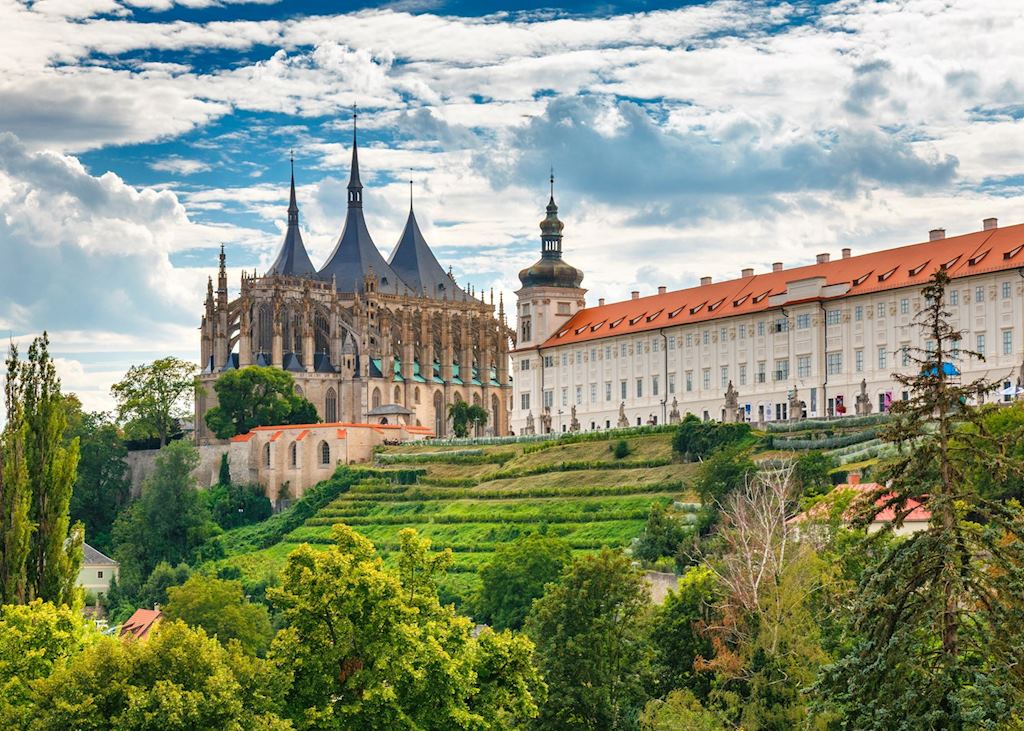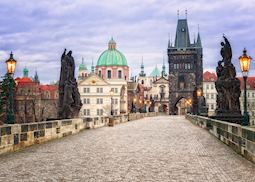During its heyday, Kutná Hora was the second-wealthiest city in Bohemia and a rival to Prague for power and influence. This guided walking tour lets you explore the abundance of architecture left behind in the historic heart of this compact town, which has been made a UNESCO World Heritage Site.
The town is about an hour from Prague — your driver will drop you off with your guide, who’ll start your tour at the Cathedral of Saint Barbara. The church’s namesake is the patron saint of miners and you’ll see them working in the thoughtfully restored 15th-century frescoes. Construction started in 1388, but was only completed in the late-19th century. From there, wander into the city’s narrow streets to admire the Baroque townhouses and stone fountain. You’ll also see the Sedlec Ossuary, a 14th-century chapel decorated with human bones.
Originally located on a silver mine that was the largest in the world at the time, Kutná Hora was the source of silver for most of Europe’s coinage during the early Middle Ages. The enormous wealth it accumulated left it with an impressive historic core, while its later decline meant it escaped being defaced by Soviet-era brutalism.
The most impressive symbol of the town’s prosperity is the spire-crowned Cathedral of Saint Barbara. Your guide will point out the architectural tributes to the miners and minters who created that wealth, as well as the impressive details, like the vaulted ceiling, that made this one of the most ambitious cathedrals in the region.
From there, stroll through the typically medieval narrow streets, which are lined with Baroque, often pastel-painted townhouses. The main market square boasts an ornate stone fountain.
Your driver will then take you to the most popular sight in the city — the Sedlec Ossuary, sometimes known as the Bone Church for its macabre decor. An early abbot at the church sprinkled soil from Jerusalem over the cemetery, making it a popular final resting place for thousands of people who died in the plagues and wars of the 14th and 15th centuries. In the late 1800s, those bones were exhumed and put to use decorating the interior — the chandelier is said to contain at least one of every bone in the human body.
If you have an appetite after that, your guide will suggest a Czech pub for lunch before your return trip to Prague.



